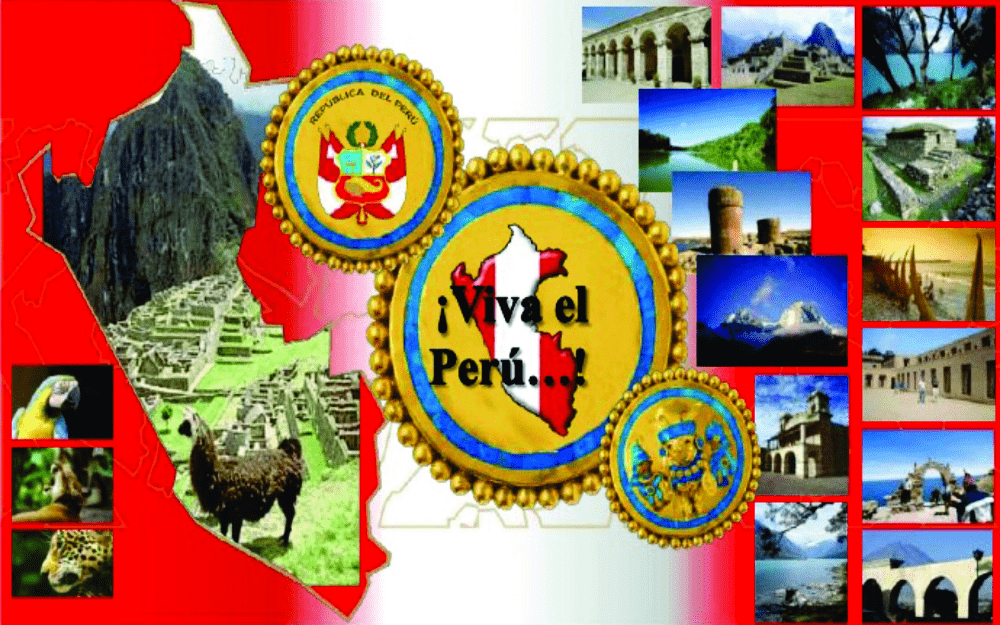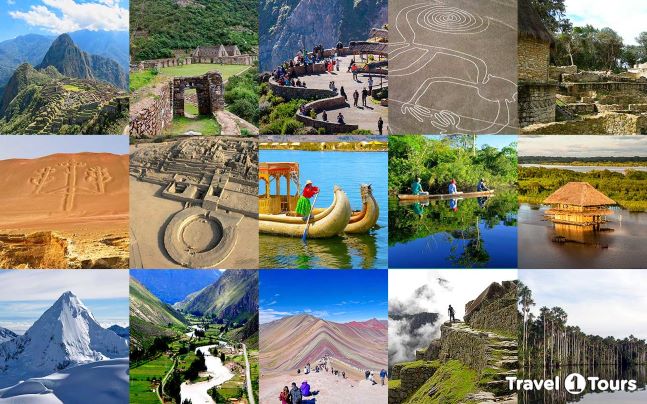Peru is worth it for many reasons. Its people will make you feel at home as soon as you land and its food will delight any lover of elaborate gastronomy. However, it is in its history that this country, located in the westernmost corner of the Latin American continent, shows one of its most impressive and valuable faces.
And, if we talk about Inca Ruins in Perú, it is impossible not to talk about the imposing city that, due to its remote location, did not suffer so directly from the attacks that Spanish colonization brought with it: the Inca city of Machu Picchu. This sleeping city was one of the last bastions of the Incas for years, a place that deserves all its fame – and where it is easy to believe that the Pachamama breathes on our side.
Even so, there are many other Inca Ruins in Perú, some older than this sacred giant, that are worth as much or more, especially since the influx of tourists is much smaller. Here we talk about some of them. Delve with us in the fascinating Peruvian history, of pucarás, cabanas, Incas and other incredible civilizations.
Read on for a guide to some of the most important Inca Ruins in Perú.
Best Inca Ruins in Perú

lima peru 
peru sitios arqueologicos1
Kuelap
Located on the top of a mountain at 3,000 meters high, Kuelap offers a panoramic view that combines clouds with the green landscape of the Amazon rainforest of Peru. It is three times older than Machu Picchu, so experts have determined that it belongs to the Chachapoyas culture, one of the several pre-Inca cultures of Peru. Kuelap spans six hectares that includes 400 round houses and a 20-meter-high 1.5km-long defensive wall. Many of the buildings are still covered in dense forest, but that only adds to their charm.
Sun`s Island
The Inca empire covered not only the current Peruvian territory, but also parts of Colombia, Ecuador, Bolivia and Chile. Located on the highest navigable lake in the world, Isla del Sol is the favorite destination for those who visit Titicaca. Life on this Bolivian island is quiet, as there is no noise and there are no motorized vehicles. A true paradise where ancient ruins intermingle with turquoise beaches, where relaxation goes hand in hand with a trip to the territory of our ancestors.
The Temple of Pachamama and the Temple of Pachatata.
Amantani Island on Lake Titicaca It has two temples on the island’s mountain peaks. The Pachamama Temple and the Pachatata Temple date back 4000 years to the Aymara culture that were conquered by the Incas. Pachamama is dedicated to Mother Earth and Pachatata was built in honor of Father Earth.
Chan Chan
Chan Chan on the coast between Trujillo and Huanchaco is an extensive complex of the Chimú Empire and the largest best Inca Ruins in South America. It was the capital of the empire with nine royal palaces and was once home to 60,000 people. Exploring the palaces and streets of the city takes a step back to pre-Inca civilizations, who conquered the city in the 15th century.
The Huaca del Sol
One of the many theories that surround the existence of these impressive archaeological ruins is that the Huaca del Sol was a building destined for politics, that of the Moon for religion and, between them, was the town where the rest of the population lived society. Today the Huaca del Sol is closed to the public because, due to lack of budget, the necessary archaeological work has not yet been carried out there. Even so, the visit to the Huaca de la Luna -and the views of the Huaca del Sol from it- are already well worth it.
The Huaca de la Luna
Although his name is not very lucky, the wall paintings that symbolize him as a strange anthropomorphic being with feline fangs, and that still maintain the original painting – in white, black, red, blue and yellow – are excellent and seem to have been made by some current artist.
On the main facade, more than twenty meters high, you can see the architectural style of this culture, which superimposed one construction on another as the years passed, and you can feel like a discoverer of centuries ago, but, yes, of those who do not take anything foreign to home.
Uyo Uyo
In Yunque, specifically, a Collagua location and one of the most beautiful towns in this area of the Andes, is Uyo Uyo, a citadel that belonged to this culture, and which can only be accessed if you do a somewhat hard but excellent walk . The view from the top is also fantastic. Even if it is only to know the tragic story of how the first inhabitants were expelled from the place by settlers, this place is worth a visit. Not far away there are hot springs, where Peruvians themselves come to talk.
Tours to the best Inca Ruins in Perú:
Best Inca Ruins in Cusco
Macchu Picchu
Top of the list for best Inca Ruins, Machu Picchu timelessly watches over the valleys seen from every angle. Ollantaytambo trains drop you off at the entrance where guides guide you through the different sections of the citadel, including houses, palaces, temples, and palaces.
More than 700 landscaped terraces combine the complex with the surrounding mountainside. The stonework and intricate details of the buildings are some of the best examples of Inca crafts in the region. The real reason for the enclave is still up for debate. Some say it was a mountain retreat for royalty, while others think it had a larger military purpose.
Choquequirao
Many think that Choquequirao was the lost city that Hiram Bingham was looking for when he stumbled upon Machu Picchu. First discovered in the 1970s, the jungle had reclaimed the site and today only a third has been excavated. Rows of terraces, temples and aquatic sanctuaries lead some to think that it was dedicated to the goddess of the sea. Others have found evidence that it was Manco Capac’s last stronghold when he fled the Spanish after their arrival.
Qoricancha-Temple Of The Sun
It was a complex of temples built during Inca rule that displayed the wealth and royalty of the empire. A series of temples were dedicated to the different deities: the sun, the moon, Venus and the stars.
The elaborate golden reliefs on the walls, the statues in the gardens, and a huge golden astrological disk that reflected a golden light in the enclave where the Inca chief was sitting were just the beginning.
Sacsayhuaman
A twelve-square-mile fortress on a hill overlooking Cusco, Sacsayhuaman It was built by the Inca emperor Pachacútec. Pachacútec expanded the scope of the empire and built Machu Picchu. The fortress has three tiers of defensive walls built with stones that weigh up to 360 tons, fit together without mortar, and still stand.
Pisac
At the beginning of the Sacred Valley is Pisac, a small town where a weekly market is held and it is a great place to see the life of the people of the region. It is also the gateway to the ruins of Pisac, a complex high in the mountains that was a city, a fortress, a temple, and an agricultural center. The terraced farmland, intricate stonework, and stunning valley views below are worth the effort.
Ollantaytambo
The well-preserved ruins of the ancient city, the temple hill, a ceremonial area, and the agricultural sector are worth taking the time in the early morning or late afternoon to explore before or after the crowds arrive.
Moray
Populated with palaces, temples and fortresses that today are World Heritage, the Sacred Valley was for the Inca empire an extension of its capital, Cusco. Within the valley are the remains of Moray, a gigantic set of terraces that served as an agricultural laboratory for the Incas. It is believed that the shape allowed them to create different microclimates that would later be interpreted as crops at different heights. An incredible human feat that deserves to be visited.
Waqrapukara
Waqrapukara is so unknown that it is not yet known whether it was a fortress, a sanctuary or an astronomical observatory. This monument is located at 4,300 meters above sea level in the Apurímac canyon, south of the city of Cusco. Its landscape is breathtaking, as it is surrounded by impressive platforms, squares and a giant monolith that contemplates the mountain landscape. Unlike other destinations with a multitude of visitors, in Waqrapukara you can camp in the surroundings, an extraordinary opportunity to enjoy the night sky in this magical place.










